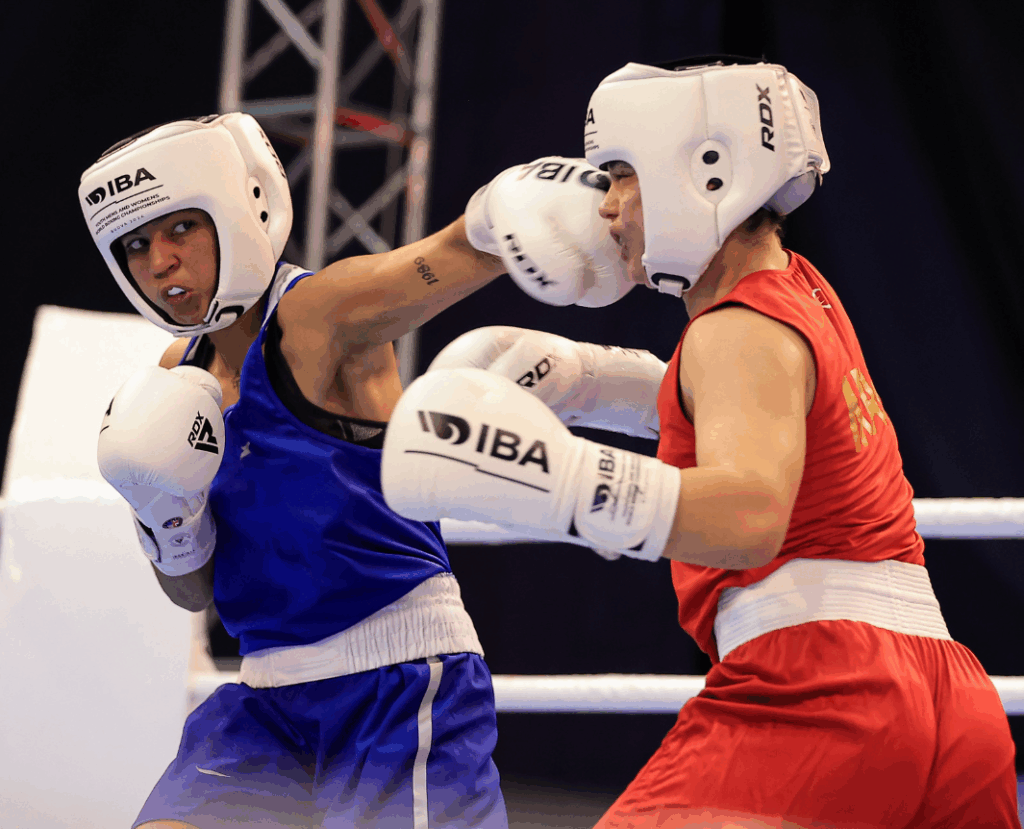You’ve probably watched boxing matches on TV and thought you could take a punch from those guys. After all, they’re just throwing their fists around, right? Here’s the thing: professional boxers generate forces that’d make a car crash seem gentle. Most people can’t comprehend what 1,700 pounds of focused impact actually means for the human body.
The disconnect between what you see and what’s actually happening might shock you.
What Makes a Boxer’s Punch So Devastating
The average person’s punch travels at 15-20 mph, but a professional boxer’s fist can exceed 30 mph. That speed is just the beginning of what separates a casual swing from a devastating knockout blow.
You’d be amazed at how boxing technique transforms raw explosive strength into focused destruction. Every punch starts with your feet pivoting, hips rotating, shoulders whipping forward, and finally, the fist snaps out with surgical precision.
Years of training wire this complex chain into muscle memory. While you might throw punches with just your arm, pros harness their entire body weight behind each strike. This coordination multiplies punching power exponentially. Speed isn’t just about fast hands; it’s about transferring force through perfect biomechanical alignment in milliseconds.

Scientific Breakdown of Punching Force
Studies measuring professional boxing strikes reveal staggering numbers that put casual punches to shame. You’d be shocked to learn that heavyweight boxers generate up to 1,700 pounds of force, equivalent to getting hit by a sledgehammer. This scientific breakdown of punching force shows professionals deliver 3-5 times more power than amateurs.
The real punching force comes from kinetic energy transfer through the entire body chain. When you watch slow-motion footage, force generation starts from the feet, travels through the hips, and explodes through the fist. Professional vs amateur power is about converting rotational energy into linear impact.
Research proves that elite boxers achieve hand speeds exceeding 25 mph, creating devastating collisions that can cause instant unconsciousness through rapid brain acceleration.

Why the General Public Underestimates Boxer Strength
When a trained fighter has never hit you, it’s easy to assume you could handle their punches based on schoolyard scuffles or watching boxing on TV. This false confidence stems from several misconceptions in sports that plague the public’s perception of boxers.
You’ll often underestimate a boxer’s power because camera angles don’t capture the true velocity and impact of strikes. Your brain can’t process the difference between amateur swings and professional precision without experiencing it firsthand.
Media portrayal further skews athletic perception. Movies show heroes absorbing countless blows, while real knockout ability drops opponents with single shots. Appearances also fool you. Smaller boxers generate devastating force through technique, not visible muscle mass. These factors combine to create dangerous assumptions about what you could withstand in reality.
Case Studies and Real-World Examples
Professional athletes from other sports have learned humbling lessons when stepping into boxing gyms, providing stark evidence of how badly people misjudge a boxer’s power. You’ve probably seen viral videos of NFL players and bodybuilders getting dropped by lightweight boxers during friendly sparring sessions. These case studies reveal how trained striking force differs from raw strength.
When MMA fighter Conor McGregor sparred with boxing champion Paulie Malignaggi, the gap in elite fighter strength became obvious. Even seasoned combat sports performance athletes underestimate how hard boxers hit until they experience it firsthand.
Remember when former NBA player Nate Robinson fought Jake Paul? Despite Robinson’s athletic prowess, he couldn’t handle even an amateur boxer’s power. These examples prove you can’t rely on size or general athleticism against specialized boxing skills.
Comparing Athletic Power: Boxers vs Other Sports
You might think a 300-pound NFL lineman hits harder than a 140-pound boxer, but you’d be dead wrong. The physics of a punch relies on acceleration, not just mass. Professional boxers generate force through whip-like kinetic chains, transferring energy from their feet through their core to their fists in milliseconds.
While football players deliver crushing tackles and basketball players showcase explosive jumps, boxing vs other sports reveals unique power generation. A knockout impact comparison shows boxers deliver concentrated force to precise targets, while other athletes distribute force across larger areas.
Training intensity in boxing specifically develops fast-twitch muscle fibers for explosive striking. You’ll find that professional boxers train their nervous systems to fire in perfect sequence, creating devastating power that other athletes can’t replicate without years of specialized practice.

Frequently Asked Questions
What Happens if an Untrained Person Punches a Professional Boxer Back?
If you’re untrained and throw a punch at a professional boxer, you’ll likely miss entirely. Even if you connect, you’ll expose yourself to devastating counters. Your poor technique and predictable movements make you extremely vulnerable.
How Long Does It Take to Develop Professional-Level Punching Power?
You’ll need 5-10 years of consistent training to develop professional punching power. It’s not just strength. You’re building technique, timing, and full-body coordination. Most pros start young and spend thousands of hours perfecting their craft.
Can Wearing Headgear Protect You From a Professional Boxer’s Punch?
While headgear can reduce cuts and superficial damage, it won’t protect you from a professional boxer’s concussive force. You’ll still experience the full impact, brain movement, and potential knockout despite wearing protective gear during sparring.
Do Retired Boxers Maintain Their Punching Power Years After Competing?
Retired boxers lose significant punching power within years of stopping. Without regular training, your speed, timing, and muscle memory deteriorate. However, they’ll still hit harder than untrained people due to ingrained technique.
What’s the Difference Between Street Fighting and Professional Boxing Power?
Street fights rely on wild, uncoordinated swings while professional boxers generate devastating power through perfect technique, timing, and full-body mechanics. They’ve trained for years to maximize force delivery that untrained fighters can’t match.




